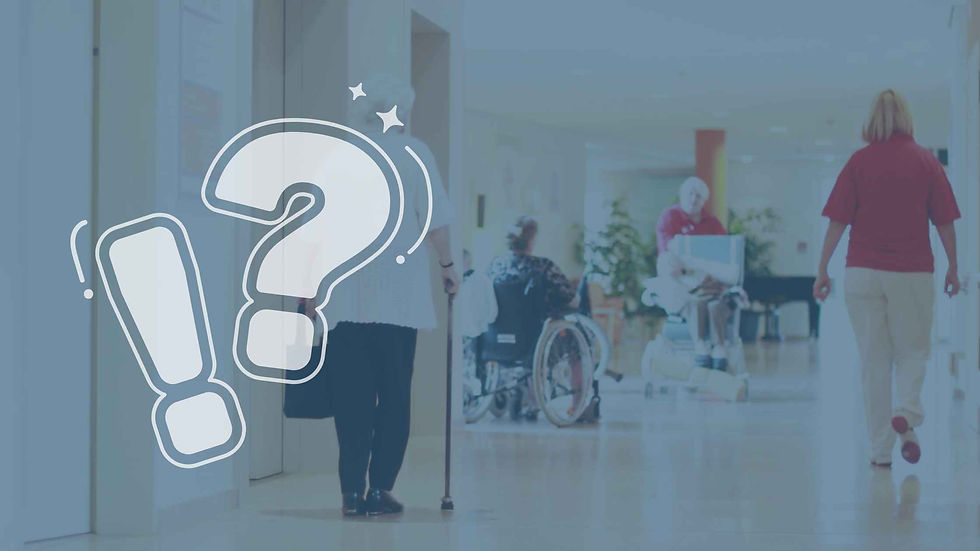Nursing Home Asset Protection: Convert Assets into Exempt Resources
- Fiffik Law Group, PC

- Aug 23, 2022
- 4 min read
Updated: Aug 23, 2023

As of 2023, according to a recent survey of nursing home costs, the average monthly cost of nursing home care in Pennsylvania is over $11,000. If you or a loved one needs nursing home care, it can drain your hard-earned savings very quickly. If your spouse is living at home, these high costs of care can negatively impact their lifestyle and wipe out any inheritance you might want to leave for your family. Planning to take advantage of Medicaid to pay for some or all of your care is important for you to consider.
In order to qualify for Medicaid (sometimes referred to as Medical Assistance or Long-Term Care Medical Assistance) financing of long-term care services, an individual must be both medically and financially eligible. Generally, an individual must use most of his own resources and income before Medicaid will help pay for long-term care services. The financial requirements limit the amount of “countable” resources and income that an individual can have and still qualify for Medicaid coverage. Countable resources are the assets that are actually taken into account for Medicaid purposes. There are also non-countable resources, which are not taken into account for Medicaid financial eligibility.
First Step: Resource Assessment
Before applying for Medicaid, individuals are encouraged to engage in a resource assessment. The purpose of this Resource Assessment Form is to determine how much of a married couple’s total resources may be protected or set aside for the community spouse, and how much, if any, must be spent before the individual in the nursing facility may be eligible for Medical Assistance benefits.
Non-Countable (Exempt) Resources
In order not to be counted for Medicaid purposes, an asset must either be specifically excluded by statute or otherwise unavailable. If an asset is specifically excluded, it is said to be “non-countable”. Here are examples of “non-countable” assets for eligibility purposes:
Primary Residence
In general, an applicant’s primary residence is a non-countable (exempt) resource. The exemption of the residence applies so long as the applicant, the applicant’s spouse, or a dependent child lives in the home. Temporary absences from the home for such things as trips and hospitalizations do not affect the exclusion of the home if the applicant intends to return to the home. An absence from the home of more than six (6) months may be an indication that the home is no longer the applicant’s primary residence.
However, the home of an institutionalized applicant/recipient that had been used as their principal place of residence before they were institutionalized will be excluded as a resource if the institutionalized applicant/recipient states in writing that it is their intent to return to the home or if the home remains the principal place of residence for their spouse or dependent child. If the person is incapable of providing the information, statements of intent to return from a person with authority to act on behalf of the institutionalized spouse (e.g., an agent under a power of attorney) are acceptable.
Dollar Limitation on Home Equity
If the applicant is the only person living in the residence, there is now effectively a dollar limitation on the amount of home equity that is excludable. The dollar limitation is $500,000, indexed for inflation, beginning in 2011. However, the dollar limitation on home equity does not apply if the applicant has a spouse, child under age 21, or a child who is blind or disabled who resides in the home.
Household Goods and Personal Effects
Household goods and personal effects are resources that are not counted (are excluded) for the purpose of determining Medicaid eligibility. Personal effects include, but are not limited to, clothing, jewelry, items of personal care, recreational equipment, musical instruments and hobby items.
Motor Vehicle
One motor vehicle for an applicant or their spouse is excluded. Other motor vehicles are counted at their equity value.
Burial Spaces and Irrevocable Burial Reserves
Burial spaces and irrevocable burial reserves are generally excluded resources for determining Medicaid eligibility. Burial spaces for the applicant and their immediate family are excluded. Irrevocable burial reserves are excluded, provided that the funds for the burial reserve are deposited with a financial institution or a funeral director under a written agreement stating that the funds cannot be withdrawn before the death of the named beneficiary. There is a limit on the dollar value of these reserve accounts and they are updated annually.
Life Insurance Policies
Life insurance owned by the applicant, up to a maximum face value of $1,500 for each insured person, is excluded. If the life insurance of an insured person has a total face value more than $1,500, then only the cash surrender value in excess of $1,000 shall be considered a countable resource to the owner.
Property Essential to Self-Support
Property (whether real or personal) used in a trade or business by the recipient, as an employee, which is essential to self-support, regardless of value, is excluded.
Its Never Too Late to Plan for Medicaid Eligibility
We can help you work through your (or your parents’) Medicaid eligibility issues. Ideally, we would do that in advance of a health crisis but life tends to make things complicated. If you have a loved one who has experienced a sudden health event that will likely result in the need to be in nursing care for an extended period of time, we can work with you to quickly convert countable assets into non-countable assets for purposes of Medicaid eligibility. It could save you $11,000 or more per month so don’t delay contacting us for help.
Contact us at 412-391-1014 to set up an appointment to get your questions answered and set your mind at ease. It is never too late to implement a plan.


